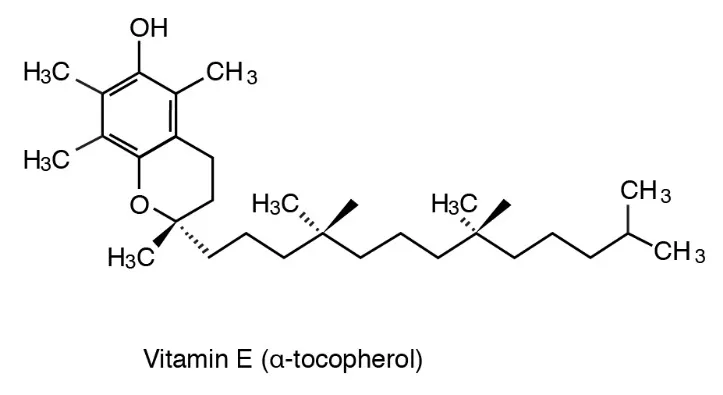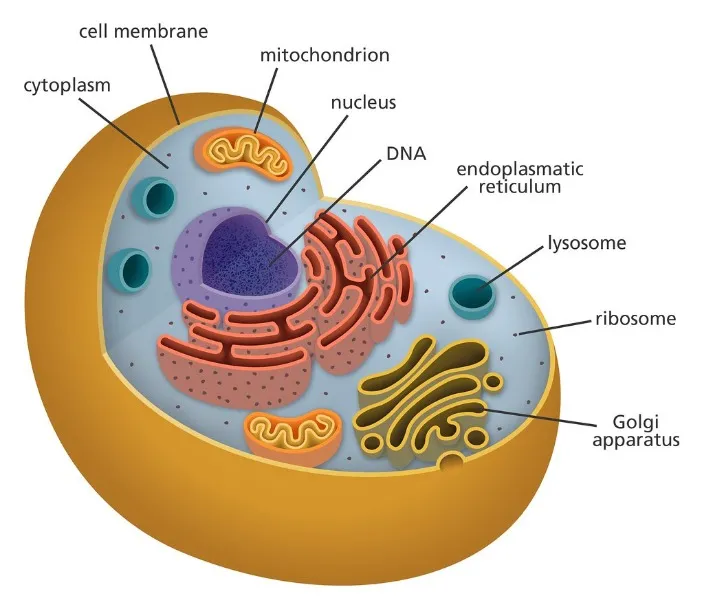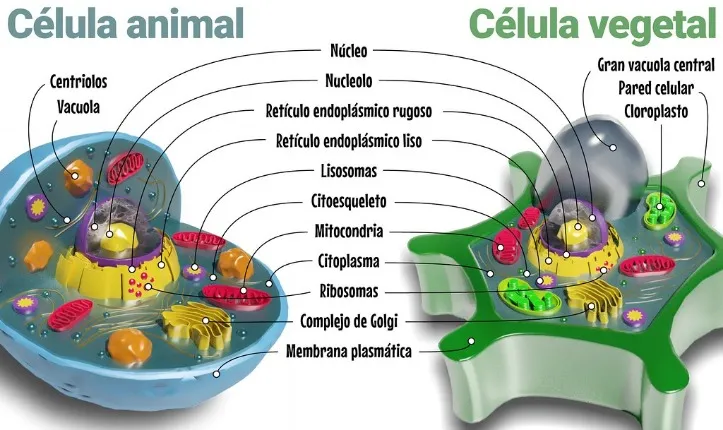Cutting out beef, mutton and dairy makes the biggest difference to agricultural land use as it would free up the land that is used for pastures. But it’s not just pasture; it also reduces the amount of cropland we need. Half of the world’s ice- and desert-free land is used for agriculture.
This means that, under normal circumstances, dogs can meet their nutritional needs by eating a combination of plant and animal foods. The source of the proteins and fats is less important than the quality and digestibility of these essential components of the dog’s diet. Dogs can thrive if they are fed a properly balanced vegetarian diet. However, an all-meat diet would be unbalanced and would not meet all of a dog’s nutritional requirements.
A severe lack of vitamin B12 in breastmilk can interfere with a baby’s brain development and can also cause anaemia in the mother. If you are breastfeeding and on a vegan diet you are recommended to continue to breastfeed – ideally for 2 years or longer. When provided a whole animal diet, dogs and cats have the ability to produce their own antioxidants. Whole animal carcasses support this production with nutrients like vitamins A, C, E, and the minerals copper, zinc, and selenium. Another group of disease-preventing nutrients called zoochemicals are provided from iron, coenzyme Q10, and the fatty acids eicosapentaenoic acid (EPA), docosahexaenoic acid (DHA) and Conjugated Linoleic Acid (CLA).
While “non-essential” amino acids can be synthesized by the animal’s body and do not need to be provided in the diet, they still play important roles in the body. A vegetarian fixed formulation diet for Laboratory Rats and Mice, free of any meat or fish products, fortified with vitamins and minerals to meet the requirements of breeding animals after the diet is autoclaved or irradiated. A vegetarian is someone who follows a vegetarian diet—they don’t eat meat of any kind (beef, chicken, fish—no animal flesh at all). The word vegan typically refers to someone who doesn’t eat or use any products from animals—vegans don’t eat meat or dairy, and they often don’t eat other animal-derived foods like honey.
Stay on top of latest health news from Harvard Medical School.
Interestingly, our primate cousin – the orangutans – have the similar hobby of eating soil. The Department of Nutrition Science uses best-practices and conducts scientific research to provide the best diets to the animals in the Zoo’s care. Providing the best diets means not only formulating appropriate diets, but also includes performing the research that provides the information keepers use to make rational, science-based nutrition decisions. This includes everything from scientific diet formulation to assembling and delivering diets, to conducting the research behind the diets, to actual acquisition of diet ingredients.

Cereals are great at providing energy, and some protein but they’re missing many essential elements. In fact, vitamin B12 is one that you can only get from animal products, or from food supplements. Irrespective of eating habits or dietary requirements, all animals provide food for other animals. Animals are connected to each other through food chains, passing food from one animal species to another. Animal food chains seldom contain more than five to six animals, for they use most of their energy themselves and only passes on a tenth. Usually, food chains start with plant-sourced foods, known as the producer of the food chain that gains energy from the sun rather than organic materials.
Special Health Reports
If you successfully hide all colonists and tamed animals away from a predator’s reach, it will hunt any other available wildlife. Some animals have different appearances between males and females. Some animals have a different sprite for infant and adult life stages, like the chicken.
A balanced diet will usually be formulated from complete primate pelleted food, fresh fruit, vegetables, insects and leafy branches and adapted for a particular species. Care should be taken to monitor individual food intake, to make sure that selection of favoured items (for example banana) does not lead to a chronically imbalanced diet. Food needs to be offered in a way and a frequency suited to the species, providing all necessary nutrients and be of adequate quantity, quality and variety. Existing models for measuring health impacts of the human diet are limiting our capacity to solve obesity and its related health problems, claim two of the world’s leading nutritional scientists in their newest research. “Ultimately, there are endless ways to achieve a nutritionally balanced diet,” says Professor Simpson.
Some carnivores hunt and eat smaller animals, such as rodents and birds, while others hunt larger prey, such as deer and bison. Some carnivores, such as hyenas and vultures, scavenge for food and eat the remains of dead animals. In one study, feeding rumen-protected methionine during the peripartum period of a cow’s cycle significantly improved postpartum performance.
Congo clawless otters probably feed on fairly soft prey items such as small land vertebrates, frogs, and eggs. River otters’ diets consist largely of crayfishes, crabs, and other aquatic invertebrates; fishes; and frogs. Despite concern that otters compete with game fishers, the fishes that otters consume are mainly non-game species. As the sun is also a major source of vitamin D, dietary intake is only important when exposure to UV light from the sun is inadequate – such as people who are housebound or whose clothing covers almost all of their skin. Fox cubs enter the world deaf, blind and dependent on their mother’s milk, much like domestic dog puppies. The cubs start eating solid food at around four weeks old and are usually completely weaned by the time they are 12 weeks of age.
Bloodstains or partially-consumed animal corpses on the ground are a fairly reliable guide, as well as a source of free leather and leftover food. Be careful not to let a hauler take away a predator’s food before it has finished eating. The short answer is yes, feeding your backyard birds is okay (with some conditions). Research done on this subject has shown that there is little to no indication that backyard bird feeding negatively impacts the diet, behavior, or activities of birds. Basically, bird behavior is not changed by feeding in a way that could harm humans like we see with other wildlife. Each ingredient is weighed when it is added to the batch of food, and ingredients such as fresh meat contain a lot of water, much of which is lost during processing.
Developing a good understanding of ruminant digestive anatomy and function can help livestock producers better plan appropriate nutritional programs and properly manage ruminant animals in various production systems. Once inside the reticulorumen, forage is exposed to a unique population of microbes that begin to ferment and digest the plant cell wall components and break these components down into carbohydrates and sugars. Rumen microbes use carbohydrates along with ammonia and amino acids to grow. The microbes ferment sugars to produce VFAs (acetate, propionate, butyrate), methane, hydrogen sulfide, and carbon dioxide. The VFAs are then absorbed across the rumen wall, where they go to the liver. Concentrate selectors have a small reticulorumen in relation to body size and selectively browse trees and shrubs.

Humans also vary in their ability to extract sugars from starchy foods as they chew them, depending on how many copies of a certain gene they inherit. Populations that traditionally ate more starchy foods, such as the Hadza, have more copies of the gene than the Yakut meat-eaters of Siberia, and their saliva helps break down starches before the food reaches their stomachs. All humans digest mother’s milk as infants, but until cattle began being domesticated 10,000 years ago, weaned children no longer needed to digest milk. As a result, they stopped making the enzyme lactase, which breaks down the lactose into simple sugars. After humans began herding cattle, it became tremendously advantageous to digest milk, and lactose tolerance evolved independently among cattle herders in Europe, the Middle East, and Africa. Groups not dependent on cattle, such as the Chinese and Thai, the Pima Indians of the American Southwest, and the Bantu of West Africa, remain lactose intolerant.
Nocturnal primates may not get enough sunlight and therefore their diet may need to include vitamin D3 supplements. Care should be taken to make sure that any plants and their products, such as seeds or fruit, and naturally-occurring or introduced plants in enclosures are not toxic to the species kept. When supplements are necessary in your primates diet, you should get these from specialist suppliers.
A carnivore that does not prey on other animals, but finds itself at the top of the food chain is known as an apex predator. A great example is to look at the polar bear that exclusively lives from meat sources, while other bear species are omnivorous and the panda bear is entirely herbivorous. Animals that eat mostly insects is referred to as insectivores, while mainly fish eaters are called piscivores.
This could suggest that at some point in history a change took place that caused only some female mosquitoes to use blood as food. Vegan and vegetarian diets generally include a range of fruits, vegetables, nuts, seeds, grains, and pulses, as well as “meat substitutes” that derive from these food types. Both diets offer similar health benefits and generally encourage people to eat more antioxidant-rich and nutrient-dense whole foods. The difference involves more than just whether a person eats cheese.
Your veterinarian may also recommend a transitional adolescent diet for your pet’s ‘teenage’ years. They need relatively larger quantities of food because they are growing rapidly and have limited space in their tiny stomachs. At 6 to 8 weeks of age, they need to be fed about four to six meals a day. By 6 months, the need for food is decreased because puppies are about 75% of their adult size and can be fed two to three meals a day. Herbivores – grazers, browsers and intermediate feeders – generally have a strict diet preference but will feed on other plants when times are severe. Grazers will feed on leaves and fruit in times of severe drought and browsers will graze when necessary.
The herd is made up of female elephants, as male elephants eventually mature and leave the herd to travel alone or with a small group of other males. The matriarchs have the best advantage of finding food, as they can remember many places where they’ve found food and water previously. And what has not been eaten by the end of the day may be as important as what has.
U-50488H, an opioid agonist of the κ receptor, which was reported to exert the opposite actions of μ receptor, also blocked corn oil–induced CPP, although it increased the corn oil intake in mice (Imaizumi et al., 2001b). These data imply that not only the dopaminergic system but also the opioidergic system could be involved in the reinforcing effect of fat. Following the diet involves eliminating all plant foods from your diet and exclusively eating meat, fish, eggs, and small amounts of low-lactose dairy products. The carnivore diet eliminates all foods except meat and animal products. Thus, it’s lacking in numerous nutrients like fiber, loaded with salt and fat, and difficult to maintain.
There are some foods that are considered nonvegan even though they are not meat or dairy. Honey is typically considered nonvegan because it’s a product of honeybees. Some products are considered nonvegan not because they contain animal products but because they’re processed with them. For example, some sugars are considered nonvegan due to being processed using a product from animal bones. There are many processed products that serve as vegan alternatives for these items.
Calcium gut-loading diets containing at least 12%–15% calcium should be fed to insects. Dusting with a balanced calcium-phosphorus powder is also a possibility; however, it is doubtful this can add enough calcium to the diet. Other sources of calcium include oyster shell, cuttle bone, and ground calcium carbonate tablets. In the early 1980s, the Smithsonian’s National Zoo was the first zoo in the U.S. to hire a research nutritionist. The commitment to promoting and practicing cutting edge wildlife nutrition for the Zoo’s birds, mammals, reptiles, amphibians, fish and invertebrates continues today. The Zoo’s Department of Nutrition comprises two clinical nutritionists, a commissary manager, a laboratory manager, a food service specialist, a group of dedicated keepers, and a management support specialist.
But because vegans are more limited in their food choices than vegetarians and meat eaters, it’s harder to plan a balanced diet. Sensory stimulation induces many metabolic responses within a few minutes. This nerve-mediated phenomenon is known as the cephalic phase response. An example is provided by the induction of pancreatic enzyme secretion after stimulation of the tongue by dietary oils or FAs. These data imply that the carboxylated groups and the length of the FA chain are also important in the recognition of FAs on the tongue. Ungulates, primates, and carnivores can rapidly become overweight when excess amounts of a high-quality diet are offered, particularly when activity is limited.
- Animals can be tamed and put to use in the colony, providing several benefits.
- It is recommended that people eat three servings of dairy products every day.
- Examples of fungivores include leafcutter ants, which grow fungi in their nests for food.
- Even when this corn or soy is “organic,” it doesn’t mean that it’s good for the animal.
- Omega-3 fatty acids can help maintain a healthy heart and reduce the risk of heart disease when eaten as part of a healthy diet.
On top of all of this, sun exposure has been shown to improve alpha diversity of the gut (19). Now, let’s take a look at additional details that are helpful to know when following an animal-based diet. That said, let’s take a closer look at the fundamental principles to keep in mind when constructing an animal-based diet. Some benefits many of our client’s experience when including low-toxicity carbs into their diet are proper and balanced hormones, improved sleep quality, consistent energy, and enhanced performance and recovery. This discussion also offers valuable insight into carbohydrate benefits and the potential pitfalls of the ketogenic diet. Are you curious about the animal-based diet but need help figuring out where to start?
Physical characteristics of omnivorous animals indicate whether they have the ability to get energy and nutrients form both plant and animal-sourced foods. A variety of different animals are classed as omnivores according to their feeding behaviors such as bears, lemurs, raccoons, a variety of birds and human. The reality of being omnivorous give various animal’s food security in stressful times or make living possible in less consistent environments.

Conjunctivitis may respond better to supportive antibiotic therapy and higher humidity than to supplemental vitamin A. Dietary histories may be especially important in such cases, because many captive turtles are fed commercial food, which is mostly cat food high in vitamin A. If a nutrient is deficient in a diet, a specific supplement in a specific amount should be recommended. Excessive supplementation of some nutrients (eg, some fat-soluble vitamins, selenium, copper) can be just as harmful as not enough because of toxicity and nutrient imbalance. Diets consisting primarily of grain products and cultivated fruits and vegetables may need micronutrient supplementation; however, supplements vary widely in their composition. To prevent “diet drift” (changes in the diet consumed because it is not regularly weighed), dietary intake (weight of feed minus leftovers) should be determined at least 3 times a year.
Lions are actually omnivores meaning they eat both meat and vegetable material. … For our domestic Lions, grass is often the most readily available plant for them to munch. Eating grass causes irritation to the stomach and will often cause the dog to vomit. Compound feed may also include premixes, which may also be sold separately. Working with others to conserve, protect and enhance fish, wildlife, plants and their habitats for the continuing benefit of the American people.
In particular, elephants love to use their tusks to strip trees of their bark. After passing through the rumen, the not yet digested digesta flows into the omasum. The omasum has many thick folds of skin and is often thought to resemble a “partially open book” and is believed to assist in the re-absorption of water from the digesta (Herd). After passing through the omasum, the digesta enters the abomasum, which is referred to as the “true stomach” because it best represents the stomach of a monogastric animal (Herd). The abomasums secretes digestive enzymes, which aid in absorption of nutrients by the small intestine.

In support of these data, CD36-null mice showed an attenuated preference for a linoleic acid solution. Furthermore, CD36-null mice with esophageal ligations displayed abolished pancreatic secretions in response to FAs (Laugerette et al., 2005). Finally, activation of c-fos in neurons of the nucleus of the solitary tract stimulated by FA deposition on the tongue of wild-type mice was abolished in CD36-null mice (Gaillard et al., 2007).
The salt content of water should be known, because some species are less tolerant than others. Animals fed dry feeds (pellets, extrusions, hay, etc) require more water than those fed succulent feeds. Muscle and organ meat, fruit, most grains and seeds, and most insects are poor sources of calcium, and excess consumption can result in calcium deficiency.
Be aware that few of our dogs are “average,” so this formula is merely a starting point. Most dogs will require fewer calories on a daily basis, while a few will require slightly more. This daily caloric total includes not only your dog’s meals, but also any snacks and treats. If your dog needs to lose weight, your veterinarian will recommend caloric restriction (which is usually 70% to 90% of the calculated amount for weight maintenance). They do this to protect their kills and not necessarily as storage, although they do feed off the carcass for up to three days. Baboons are known to stuff food in their cheeks when feeding as a temporary storage facility.

Some omnivores, such as pigs and chickens, are omnivorous but are primarily raised for meat. They have sharp teeth and strong jaws that are designed to capture and kill prey. Some common examples of carnivores Enrich Your Knowledge of the Natural World with Doeat.top’s Animal Food Facts include lions, tigers, and wolves. They have specialized digestive systems that are designed to break down tough plant material. Some common examples of herbivores include cows, horses, and deer.
For many people, veganism is not just about diet but applies to all aspects of their lives. Fortunately, the range of vegan clothing and animal-free cosmetics is also growing and becoming increasingly accessible. Vegans also seek to avoid all other forms of animal exploitation and cruelty, including visiting zoos or circuses.

This stat is determined by the colonist’s animals skill, manipulation, talking, and hearing. When a handler fails to tame an animal there is a cooldown period of 30,000 ticks (8.33 mins), or 12 in-game hours, before another attempt can be made. There is also a chance it will turn manhunter and start attacking the handler and others. For animals with high revenge chance, shown on the Wildlife menu, it can be a good idea to have a drafted colonist near your handler while an attempt is being made.


